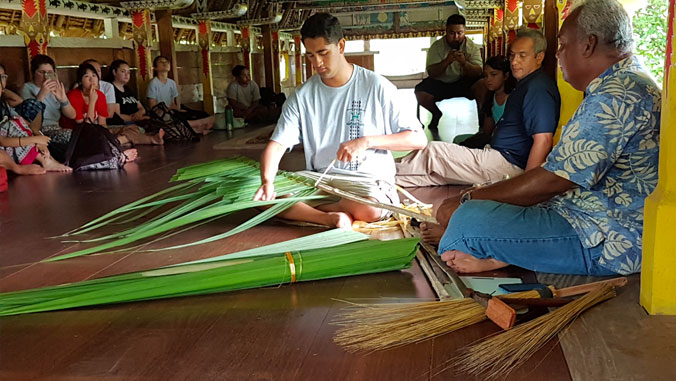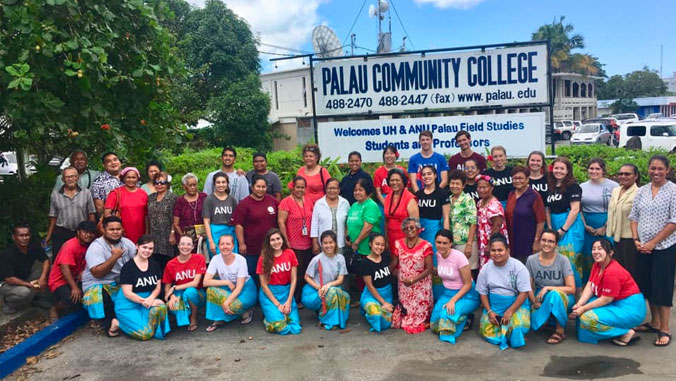
Lorenzo Finau-Cruz, a Pacific Islands Studies graduate student at the University of Hawaiʻi at Mānoa, had never been to a Pacific Island other than Hawaiʻi. Growing up in the San Francisco Bay Area, he was closely tied to his Filipino roots but had always yearned for opportunities to celebrate his Tongan heritage in a Pacific setting.
Elizabeth Bennet, a Pacific Islands Studies graduate headed for a doctoral program at the University of California Los Angeles, has visited several islands in Polynesia. But she had always wanted to do research in Micronesia to expand her experience with Pacific Islander communities.
Both of their dreams came true this summer, when 22 students from UH Mānoa’s Center for Pacific Islands Studies (CPIS) program in the School of Pacific and Asian Studies, and 17 students from Australian National University (ANU), ventured to Palau Community College. They participated in a 16-day field school that provided hands-on learning opportunities to apply theoretical classroom learning in real-world contexts.
“It was an overwhelmingly successful field school,” said co-director James Perez Viernes, CPIS outreach director. “This first-of-its-kind visit offered students a personal experience of understanding the complex relationships involving gender, environment, tourism, regional and political affairs, and the arts in Palau. We engaged in important issues facing Palau specifically, and greater Oceania more broadly.”
Added co-director Katerina Teaiwa, ANU associate professor, “This was the first CPIS field school that was not language based, and Dr. Viernes and I were the first indigenous Micronesian scholars to lead this scholarly effort in Micronesia on behalf of both CPIS and ANU. It really highlighted the unique ways that Pacific Islands Studies is community engaged and focused on indigenous experiences and worldviews.”
Field school participants completed several service-learning projects, including thatching bai (traditional Palauan meeting houses), fishing for people in need, and sharing cultural dance and performance with community elders. Highlights ranged from interactions with master Micronesian navigators and members of the Nuclear Free Independent Pacific group, to meetings with Bilung Gloria Salii, Palau’s highest ranking woman in the traditional system of leadership, and the Mechesil Belau, Palau’s council of traditional women elders.
The summer field school was made possible by support from the National Resource Center Program of the U.S. Department of Education.
CPIS is the only national resource center in the U.S. focused on the Pacific Islands, and the only national resource center on the Mānoa campus.
Go to the CPIS website for more on the center.


